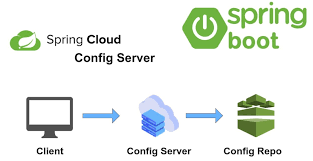使用<property>标签的value属性配置原始数据类型和ref属性配置对象引用的方式来定义Bean配置文件。这两种情况都涉及将单一值传递给Bean。那么如果您想传递多个值,例如Java集合类型,如List、Set、Map和Properties怎么办?为了处理这种情况,Spring提供了四种类型的集合配置元素,如下所示:
|序号|元素 & 描述|
|-|-|
|1|<list>|
||用于注入一组值,允许重复。|
|2|<set>|
||用于注入一组值,但不允许重复。|
|3|<map>|
||可用于注入一组名称-值对,其中名称和值可以是任何类型。|
|4|<props>|
||可用于注入一组名称-值对,其中名称和值都是字符串。|
您可以使用<list>或<set>来注入java.util.Collection的任何实现或数组。
在处理集合时,通常会遇到两种情况:(a)传递集合的直接值和(b)将Bean的引用作为集合元素之一传递。
示例
假设您已经准备好Eclipse IDE,并采取以下步骤创建Spring应用程序:
步骤 描述
1 创建一个名为SpringExample的项目,在创建的项目中的src文件夹下创建一个名为com.tutorialspoint的包。
2 使用"Add External JARs"选项添加所需的Spring库,如Spring Hello World示例章节中所述。
3 在com.tutorialspoint包下创建Java类JavaCollection和MainApp。
4 在src文件夹下创建Beans配置文件Beans.xml。
5 最后一步是创建所有Java文件和Bean配置文件的内容,并按以下说明运行应用程序。
以下是JavaCollection.java文件的内容:
package com.tutorialspoint;
import java.util.*;
public class JavaCollection {
List addressList;
Set addressSet;
Map addressMap;
Properties addressProp;
// 用于设置List的setter方法
public void setAddressList(List addressList) {
this.addressList = addressList;
}
// 打印并返回列表的所有元素。
public List getAddressList() {
System.out.println("List Elements :" + addressList);
return addressList;
}
// 用于设置Set的setter方法
public void setAddressSet(Set addressSet) {
this.addressSet = addressSet;
}
// 打印并返回Set的所有元素。
public Set getAddressSet() {
System.out.println("Set Elements :" + addressSet);
return addressSet;
}
// 用于设置Map的setter方法
public void setAddressMap(Map addressMap) {
this.addressMap = addressMap;
}
// 打印并返回Map的所有元素。
public Map getAddressMap() {
System.out.println("Map Elements :" + addressMap);
return addressMap;
}
// 用于设置Property的setter方法
public void setAddressProp(Properties addressProp) {
this.addressProp = addressProp;
}
// 打印并返回Property的所有元素。
public Properties getAddressProp() {
System.out.println("Property Elements :" + addressProp);
return addressProp;
}
}
以下是MainApp.java文件的内容:
package com.tutorialspoint;
import org.springframework.context.ApplicationContext;
import org.springframework.context.support.ClassPathXmlApplicationContext;
public class MainApp {
public static void main(String[] args) {
ApplicationContext context = new ClassPathXmlApplicationContext("Beans.xml");
JavaCollection jc=(JavaCollection)context.getBean("javaCollection");
jc.getAddressList();
jc.getAddressSet();
jc.getAddressMap();
jc.getAddressProp();
}
}
以下是包含所有集合类型配置的Beans.xml配置文件的内容:
<?xml version = "1.0" encoding = "UTF-8"?>
<beans xmlns = "http://www.springframework.org/schema/beans"
xmlns:xsi = "http://www.w3.org/2001/XMLSchema-instance"
xsi:schemaLocation = "http://www.springframework.org/schema/beans
http://www.springframework.org/schema/beans/spring-beans-3.0.xsd
">
<!-- Definition for javaCollection -->
<bean id = "javaCollection" class = "com.tutorialspoint.JavaCollection">
<!-- 产生 setAddressList(java.util.List) 调用 -->
<property name = "addressList">
<list>
<value>INDIA</value>
<value>Pakistan</value>
<value>USA</value>
<value>USA</value>
</list>
</property>
<!-- 产生 setAddressSet(java.util.Set) 调用 -->
<property name = "addressSet">
<set>
<value>INDIA</value>
<value>Pakistan</value>
<value>USA</value>
<value>USA</value>
</set>
</property>
<!-- 产生 setAddressMap(java.util.Map) 调用 -->
<property name = "addressMap">
<map>
<entry key = "1" value = "INDIA"/>
<entry key = "2" value = "Pakistan"/>
<entry key = "3" value = "USA"/>
<entry key = "4" value = "USA"/>
</map>
</property>
<!-- 产生 setAddressProp(java.util.Properties) 调用 -->
<property name = "addressProp">
<props>
<prop key = "one">INDIA</prop>
<prop key = "one">INDIA</prop>
<prop key = "two">Pakistan</prop>
<prop key = "three">USA</prop>
<prop key = "four">USA</prop>
</props>
</property>
</bean>
</beans>
当您完成创建源代码和Bean配置文件后,让我们运行应用程序。如果一切正常,应用程序将打印以下消息:
List Elements :[INDIA, Pakistan, USA, USA]
Set Elements :[INDIA, Pakistan, USA]
Map Elements :{1=INDIA, 2=Pakistan, 3=USA, 4=USA}
Property Elements :{two=Pakistan, one=INDIA, three=USA, four=USA}
注入Bean引用
以下Bean定义将帮助您了解如何将Bean引用注入为集合的元素之一。您甚至可以将引用和值混合在一起,如下面的代码片段所示:
<?xml version = "1.0" encoding = "UTF-8"?>
<beans xmlns = "http://www.springframework.org/schema/beans"
xmlns:xsi = "http://www.w3.org/2001/XMLSchema-instance"
xsi:schemaLocation = "http://www.springframework.org/schema/beans
http://www.springframework.org/schema/beans/spring-beans-3.0.xsd">
<!-- Bean Definition to handle references and values -->
<bean id = "..." class = "...">
<!-- Passing bean reference for java.util.List -->
<property name = "addressList">
<list>
<ref bean = "address1"/>
<ref bean = "address2"/>
<value>Pakistan</value>
</list>
</property>
<!-- Passing bean reference for java.util.Set -->
<property name = "addressSet">
<set>
<ref bean = "address1"/>
<ref bean = "address2"/>
<value>Pakistan</value>
</set>
</property>
<!-- Passing bean reference for java.util.Map -->
<property name = "addressMap">
<map>
<entry key = "one" value = "INDIA"/>
<entry key = "two" value-ref = "address1"/>
<entry key = "three" value-ref = "address2"/>
</map>
</property>
</bean>
</beans>
要使用上述Bean定义,您需要以使它们能够处理引用的方式定义setter方法。
注入null和空字符串值
如果需要传递空字符串作为值,可以使用以下方式传递:
<bean id = "..." class = "exampleBean">
<property name = "email" value = ""/>
</bean>
上述示例等效于Java代码:exampleBean.setEmail("")
如果需要传递NULL值,可以使用以下方式传递:
<bean id = "..." class = "exampleBean">
<property name = "email"><null/></property>
</bean>
上述示例等效于Java代码:exampleBean.setEmail(null)
最后
为了方便其他设备和平台的小伙伴观看往期文章,链接奉上:
公众号搜索Let us Coding, 知乎, 开源中国, CSDN, 思否, 掘金, InfoQ, 简书, 博客园, 慕课, 51CTO, helloworld, 腾讯开发者社区, 阿里开发者社区
看完如果觉得有帮助,欢迎点赞、收藏 和关注
 51工具盒子
51工具盒子






